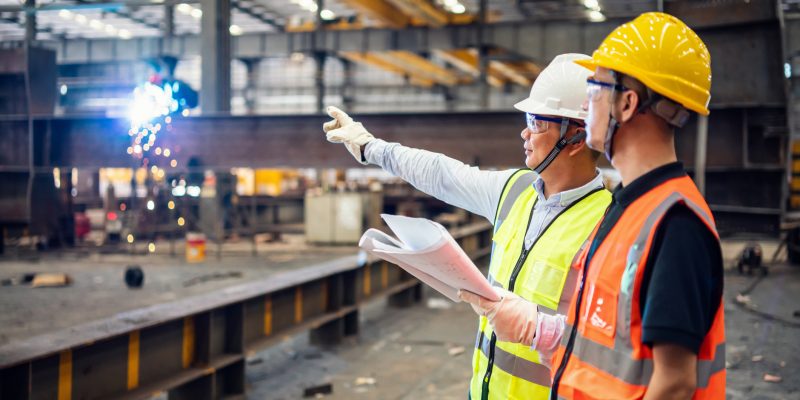In this process of welding inspection, the welding inspection companies will examine the weld for safety, strength, quality, and other factors.
This inspection is very important for the safety of the welding of different equipment, pipelines, buildings, and industrial machinery by which the product’s reliability will be enhanced.
In welding inspection, the inspector will perform various types of inspection with the help of different techniques, standards, and codes and determine whether the weld is suitable for the intended job.
In this, let’s discuss different types of welding inspection and stages of the weld inspection.
Different types of welding inspection
Five common inspection methods are being used by welding inspection companies which are:
- Visual inspection
- Radiographic
- Magnetic particle
- Liquid penetration
- Ultrasonic
Visual inspection
VT, or Visual inspection, is the simplest and easiest form of weld inspection. In this process, the inspector surveys the weld visually and identifies if there are any flaws or not.
They also determine the size of the issue. This is a cost-effective process and can be done while the process continues.
This inspection also has some limitations, as you can only depict the issues on the surface and see them with the naked eye. This is to only detect the obvious defects and issues seen on the outer side.
Radiographic Test
X-ray or RT radiographic test is a versatile, non-destructive, widely used method. By this method, the inspector can examine the internal welding quality and identify the problem from the internal parts.
This procedure is commonly used to identify internal issues like burn-through, non-metallic inclusions, and internal cracks. In this, the examiner records the whole process on film and which further can be used for subsequent examination.
In this radiographic test, the accuracy of the test depends upon the quality of equipment used and the inspector’s experience and skill. Also, you cannot perform this process on some welding materials.
Magnetic Particle test
The inspector uses this Magnetic particle testing to detect surface-level or near-surface issues. This is a very quick method to detect any type of issue and also can adjust the sensitivity.
This has multiple levels of detection by which they can detect any type of minor problem, like any small discontinuities or tight cracks.
To conduct the whole process, the inspector should be experienced and skilled. Although this technique has some flaws, it can be done only on ferromagnetic materials like steel and iron.
And if the surface has a thick coat of paint, this test cannot be done on that process.
Liquid penetration inspection
By doing this liquid penetration testing, you can identify small leaks that the naked eye can not detect. This is the most common technique to find flaws in welding.
You can perform this test in both magnetic and non-magnetic materials. It also could be used on the surface of complex shapes and designs.
In this, you can only detect the flaws in the surface level, and you must need pre and post-cleaning after this inspection.
Ultrasonic Inspection
The welding inspection companies use this ultrasonic testing to detect flaws in both surface and internal levels. This is a very precise method of testing in which you can identify the measurement and exact location of the weld flaw.
This is very accurate and sensitive testing than any other testing process. Inspector uses phased array technics to get a more accurate result in more complex locations.
They use this phased array technology (PAUT) to evaluate the issue from multiple angles and get accurate results. This means you can quickly inspect the complete geometry surface with this testing method.
To ensure safety, welding inspection companies perform the inspection after, during, and before the welding. And they will detect any weld fault in the product before it leaves the factory or shop.
They ensure the worker maintains all regulatory compliance during and before the weld. Play an important role in many industries, and they will demonstrate the acceptance standards and the particular criteria of welding.
They will ensure that they maintain a certain standard of the product and quality. They perform various testing methods to identify the issues and faults accurately and quickly.
Also Read:
Welding Trade School San Diego: Get Your Hands On A Future






Comments